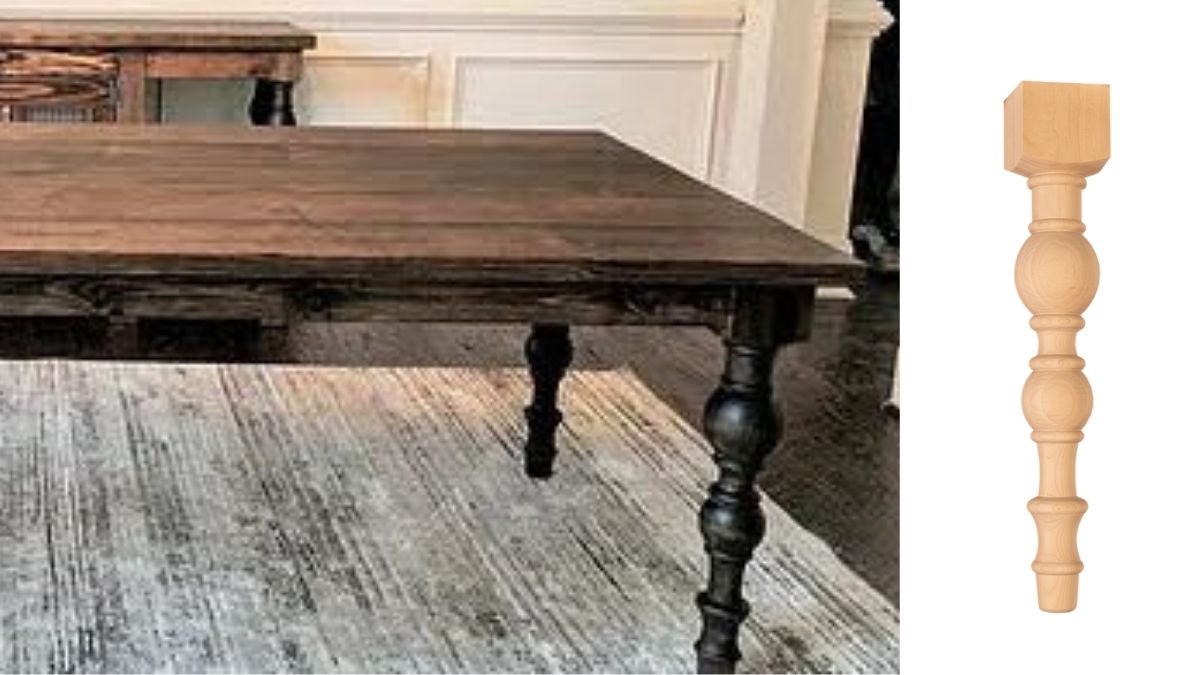At Osborne Wood Products, we supply the cabinet and furniture trade with the highest quality decorative wood components. Naturally, we work hard to source the highest quality wood possible. In an effort to better help our hobbyist and DIY customers make the right choice in which wood types to use in their projects, we are introducing a new blog series in which we go into detail discussing our various wood types and answering any common questions our customers may have.

If you’re looking for strength, hardness, and durability, then hickory is the best commercially available wood in North America. It ranks the highest of all our woods on the Janka hardness scale, coming in at an impressive 1820.
According to the National Hardwood Lumber Association, hickory and pecan are treated the same and sold as hickory-pecan, and there is no separation for sub-species. This is because telling them apart is only possible with the use of chemical or microscopic testing. As such, our hickory is a mix of hickory and pecan. Overall, the grain is normally straight, but can sometimes be irregular or wavy. Hickory-pecan has a coarse texture with a great deal of color variation between reddish brown, lighter brown, and white, and may have a striped appearance.
For this reason, our hickory is a stain grade option for projects where such variety adds to the detail of the design. You can also view our hickory standards here.
Upon request, we are also able to source rustic hickory for custom jobs. Our rustic hickory is similar to our rustic alder in that we purposely select for the same types of knots. If you’re interested in ordering our rustic hickory, but not sure about the knots, you can view our rustic alder standards here, along with photos to demonstrate the knots we select for.
Mahogany is one of the most valuable timbers in Africa, as well as one of the foremost cabinet woods in the world. At Osborne, we have a network of lumber suppliers that allows us to source various species of mahogany. Due to our various sources, our mahogany can come in colors ranging from a pale pinkish brown to a darker reddish brown and may include streaks of medium to dark reddish brown. The color will darken with age, as well.
Mahogany’s grain can be straight, interlocked, irregular, or wavy, though ours tends to be straight or interlocked with a medium, coarse texture. It is easy to work with, glue up, and finish, and scores an 830 on the Janka hardness scale. Our mahogany is a sapele mahogany and is recommended for staining. Additionally, while we don’t recommend any of our products for outdoor use, mahogany is one of the best options among our choices because of the wood’s natural properties.
Unfortunately, due to its popularity, mahogany is listed as a vulnerable wood species due to a population reduction of over 20% in the past 100 years.
Black Walnut is considered a very popular wood type, and it is quite durable and strong. Scoring a 1010 on the Janka hardness scale, black walnut is considered easy to work with as long as the grain is straight, which it usually is. However, irregular grain is not uncommon and may cause problems when working with it. Black walnut also glues, stains, and finishes quite well.
Contrary to its name, black walnut is actually brown, ranging from a lighter pale brown to a dark chocolate with even darker streaks. It can also contain burls, butts, and curls. The sapwood is usually white in color and may be as high as 25% in our products, but we have it steamed to make it a light coffee color, allowing for better color uniformity in your projects. You can also view our walnut standards here.
All of our wood types are sorted into a Traditional, Premium, or Specialty selection. You can find hickory, mahogany, and black walnut all under Premium.
Additionally, if you’re interested in a part that doesn’t normally come in one of these woods, you can contact us for a custom quote by filling out our online form, emailing info@osbornewood.com, or calling 800-849-8876 and speaking with a representative today.
Check out the links below to read more in-depth about all the other wood types we offer:
- Maple (hard, soft, tiger/curly)
- Pine (knotty, heart, specialty)
- Oak (red, white, rift vs. quarter sawn)
- Rubberwood
- European Beech
- Cherry & Alder
- Hickory, Mahogany, & Walnut – this post
- Poplar
- Miscellaneous & Specialty Woods








